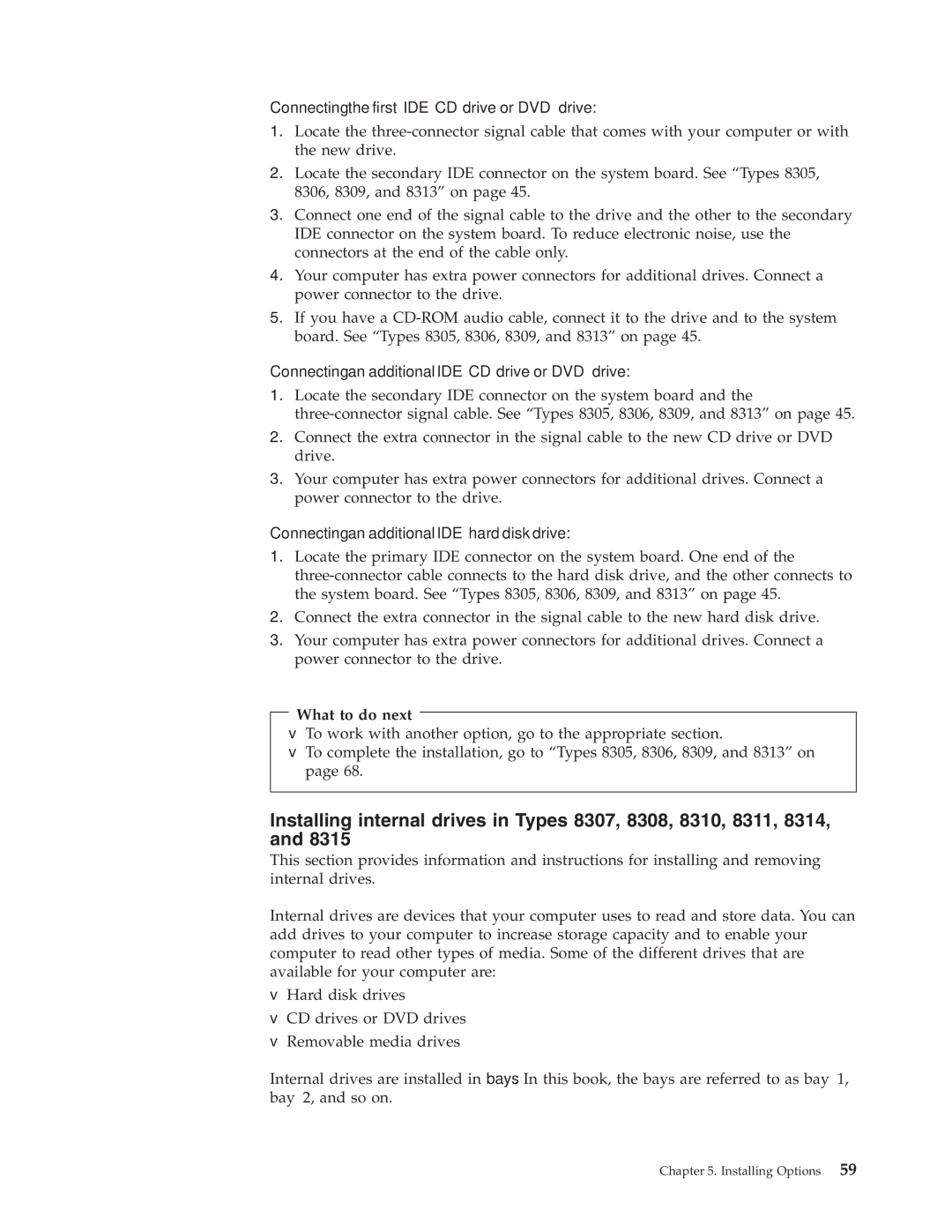
Connecting the first IDE CD drive or DVD drive:
1.Locate the
2.Locate the secondary IDE connector on the system board. See “Types 8305, 8306, 8309, and 8313” on page 45.
3.Connect one end of the signal cable to the drive and the other to the secondary IDE connector on the system board. To reduce electronic noise, use the connectors at the end of the cable only.
4.Your computer has extra power connectors for additional drives. Connect a power connector to the drive.
5.If you have a
Connecting an additional IDE CD drive or DVD drive:
1.Locate the secondary IDE connector on the system board and the
2.Connect the extra connector in the signal cable to the new CD drive or DVD drive.
3.Your computer has extra power connectors for additional drives. Connect a power connector to the drive.
Connecting an additional IDE hard disk drive:
1.Locate the primary IDE connector on the system board. One end of the
2.Connect the extra connector in the signal cable to the new hard disk drive.
3.Your computer has extra power connectors for additional drives. Connect a power connector to the drive.
What to do next
vTo work with another option, go to the appropriate section.
vTo complete the installation, go to “Types 8305, 8306, 8309, and 8313” on page 68.
Installing internal drives in Types 8307, 8308, 8310, 8311, 8314, and 8315
This section provides information and instructions for installing and removing internal drives.
Internal drives are devices that your computer uses to read and store data. You can add drives to your computer to increase storage capacity and to enable your computer to read other types of media. Some of the different drives that are available for your computer are:
vHard disk drives
vCD drives or DVD drives
vRemovable media drives
Internal drives are installed in bays. In this book, the bays are referred to as bay 1, bay 2, and so on.
